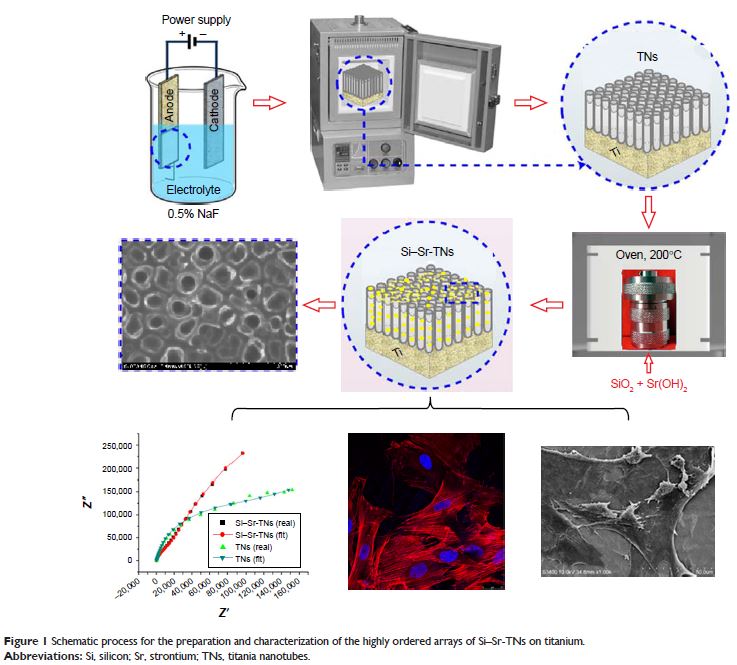108985
论文已发表
注册即可获取德孚的最新动态
IF 收录期刊
- 3.4 Breast Cancer (Dove Med Press)
- 3.2 Clin Epidemiol
- 2.6 Cancer Manag Res
- 2.9 Infect Drug Resist
- 3.7 Clin Interv Aging
- 5.1 Drug Des Dev Ther
- 3.1 Int J Chronic Obstr
- 6.6 Int J Nanomed
- 2.6 Int J Women's Health
- 2.9 Neuropsych Dis Treat
- 2.8 OncoTargets Ther
- 2.0 Patient Prefer Adher
- 2.2 Ther Clin Risk Manag
- 2.5 J Pain Res
- 3.0 Diabet Metab Synd Ob
- 3.2 Psychol Res Behav Ma
- 3.4 Nat Sci Sleep
- 1.8 Pharmgenomics Pers Med
- 2.0 Risk Manag Healthc Policy
- 4.1 J Inflamm Res
- 2.0 Int J Gen Med
- 3.4 J Hepatocell Carcinoma
- 3.0 J Asthma Allergy
- 2.2 Clin Cosmet Investig Dermatol
- 2.4 J Multidiscip Healthc

通过阳极氧化 - 水热法形成的生物功能化、Sr-和 Si 负载的钛表面二氧化钛纳米管涂层
Authors Huang Y, Shen X, Qiao HX, Yang H, Zhang XJ, Liu YY, Yang HJ
Received 1 August 2017
Accepted for publication 7 December 2017
Published 31 January 2018 Volume 2018:13 Pages 633—640
DOI https://doi.org/10.2147/IJN.S147969
Checked for plagiarism Yes
Review by Single-blind
Peer reviewers approved by Dr Akshita Wason
Peer reviewer comments 3
Editor who approved publication: Dr Linlin Sun
Background: Two frequent problems
associated with titanium (Ti) surfaces of bone/dental implants are their
corrosion and lack of native tissue integration.
Methods: Here, we present an anodization-hydrothermal
method for coating Ti surfaces with a layer of silicon (Si)- and strontium
(Sr)-loaded titania nanotubes (TNs). The Ti surfaces coated with such a layer
(Si–Sr-TNs) were characterized with different techniques.
Results: The results indicate that the Si4+ and Sr2+ ions were
evenly incorporated into the TNs and that the Si–Sr-TN layer provides good
protection against corrosive media like simulated body fluid. The excellent
cytocompatibility of the coating was confirmed in vitro by the significant
growth and differentiation of MC3T3-E1 osteoblastic cells.
Conclusion: Being easily and economically fabricated, the
Si–Sr-TN surfaces may find their niche in clinical applications, thanks to
their excellent biological activity and corrosion resistance.
Keywords: TiO2 nanotube, silicon, strontium,
cytocompatibility, corrosion resistance
